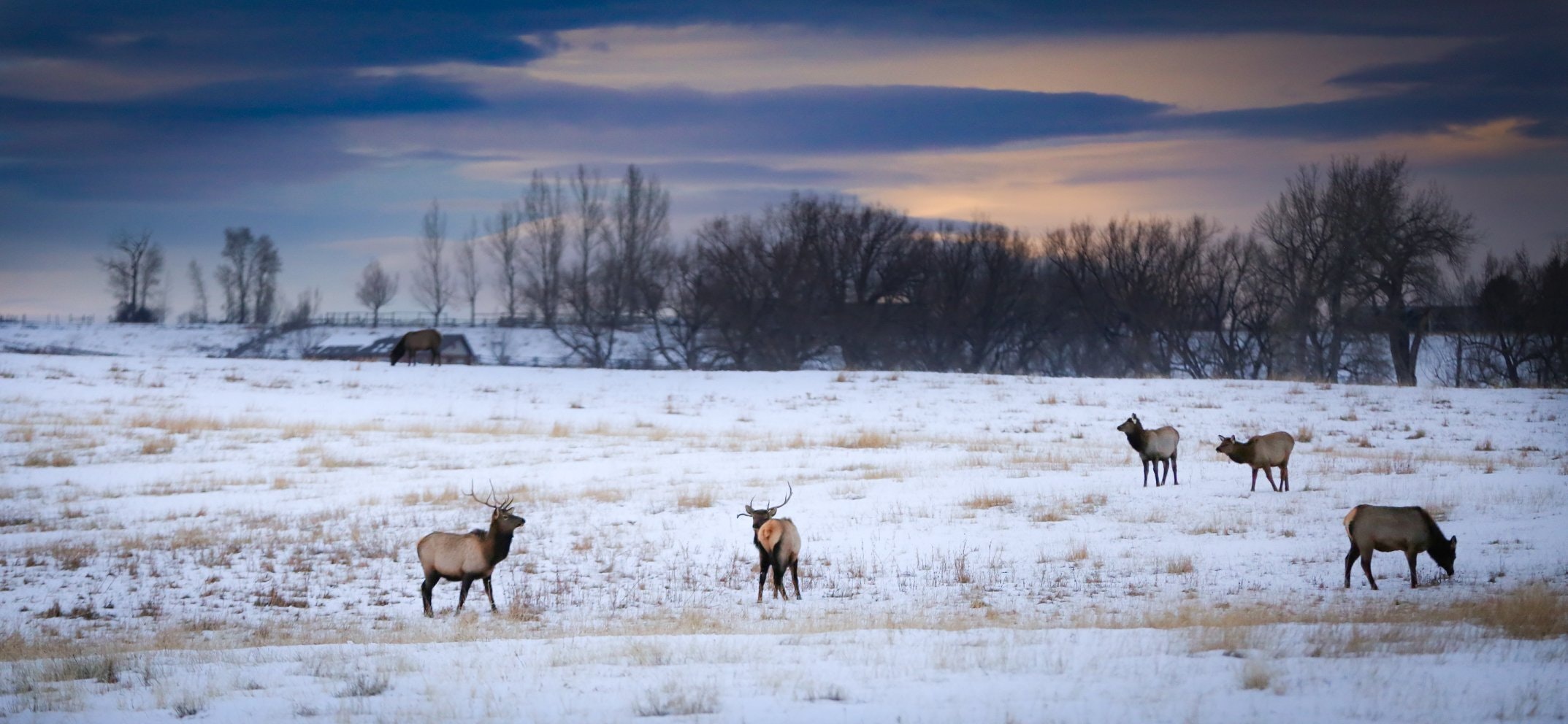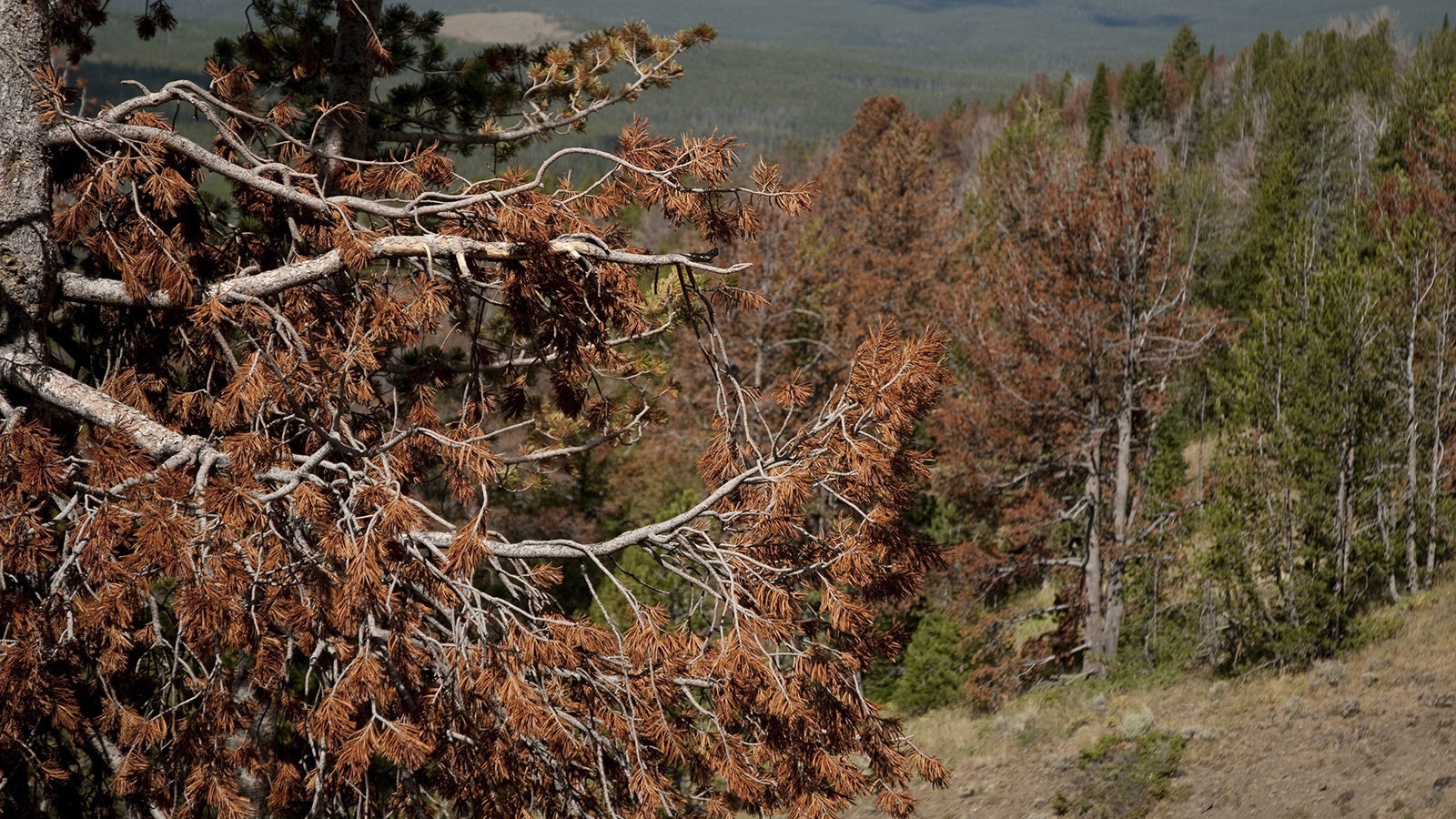A trickle of elk out of the Wind River Mountains and into the lowlands near Lander that began several years ago has become a flood.
The herd now includes upward of 600 elk and has afforded hunters opportunities for late-season antlerless elk tags, Jason Hunter, the Wyoming Game and Fish Department’s Lander regional supervisor, told Cowboy State Daily on Wednesday.

Was It Wolves Or Hay?
The elk have been drawn toward Lander primarily because of weather and an abundance of food, such as hay, near town, Hunter said.
Avid outdoorsman and Lander resident Karl Brauneis thinks it had more to do with wolves in the mountains.
“I am certain that the recent arrival of the present elk to the Lander front is due to the wolves,” Brauneis, a retired forester, told Cowboy State Daily. “The timing coincided perfectly. I am sure there are other variables, but my guess is it is all about the wolves.”
If wolves are a factor, the predators are probably only a minor one, Hunter said.
The Wind River Mountains are in the “predator zone” region of Wyoming, he said. That means they may be killed on sight at any time without bag limits or wolf hunting tags required.
So, wolves haven’t been able to establish a strong enough presence in the region to push that many elk, Hunter said. They’re mostly just lone wolves or small groups there.
“If we have some wolves move in, we can see some movement among the elk because of it, but it hasn’t been a major factor,” he said.
It’s Generational, Elk There To Stay
The first 50 or so elk started showing up near Lander about six or eight years ago, Hunter said.
Storms in the mountains might have driven them toward lower elevations, he said, adding they also could have been pushed by humans hunting elk in the mountains during archery seasons, which usually open in September.
But it was an abundance of “unprotected hay” in local fields that really hooked them, he said.
They started congregating in the Table Mountain area just to the southwest of town. As the number grew, the elk also started to occupy territory to the northwest all the way to the Milford area, he said.
“We’ve worked with the landowners and gotten most of the hay that was unprotected under protection now in hay sheds and such,” Hunter said.
The elk still enjoy some forage from local fields, as well as natural grasses.
The herd typically arrives in early winter and frequently stays at least through calving season in the spring. So, that means the Lander elk herd is here to stay, he said.
“They’re habituated to the area now,” Hunter said. “The calves that were born down here, that’s all they know.”

Not The First Herd There
Younger Lander residents or relative newcomers might not realize elk have been there before, Brauneis said.
“If you go further back in time – I am thinking 1960s – I understand from some of the old timers that the elk used to migrate down off the mountain and across the front of the mouth of Sinks Canyon and on over to Table Mountain,” he said.
Human activity might have halted that, he added.
“It is my understanding that the development of homes and fences along the Sinks Canyon Road was the reason this migration pattern ended,” he said. “Now there are also buffalo in the area via two ranches and they have very tall and sturdy fences.”
The Sinks Canyon Road has remained somewhat of a trouble spot, Hunter said, and some elk have been hit by vehicles there.
“Warning signs put there by WYDOT (Wyoming Department of Transportation) have helped alert drivers and lessened that problem,” he said.
Late-Season Hunting
The herd’s territory is in elk hunt areas 28 and 127, both of which offer late season antlerless elk hunts, Hunter said.
Over-the-counter general ek tags are good for antlerless elk in area 127. Game and Fish issues roughly 175 draw tags for antlerless elk each season for area. The late elk hunt seasons generally run from November through January.
Depending upon circumstances, the hunting can be good or frustrating, Hunter said.
“If you live six or eight hours away and hear that the elk are out, they might not still be here by the time you get here,” he said. “And last year, because of a mild winter, they weren’t really here at all during hunting season.”
The land the elk hang out on also is mostly private, Hunter said. Some landowners welcome hunters because they want the critters away from their fields.
Others prefer to see the elk left alone, which gives the animals some rest and sanctuary, Hunter said.
“We do have places where the landowners enjoy having the elk on their property, so the elk don’t get any hunting pressure in those places,” he said.





